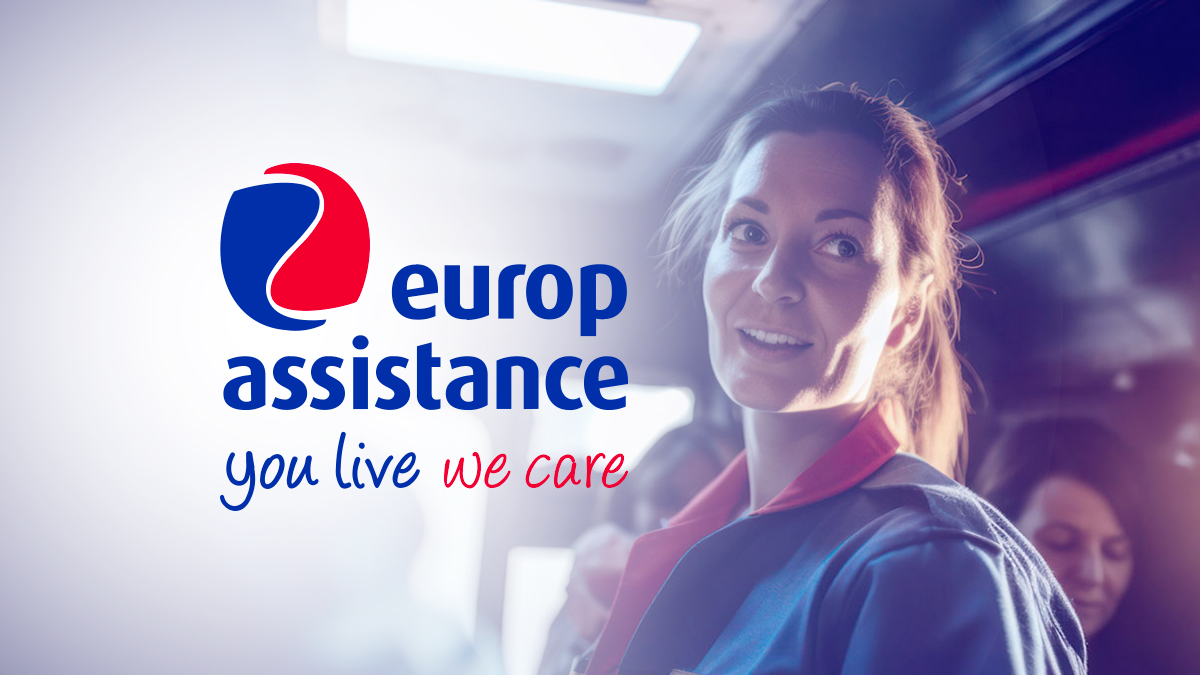Europ Assistance is issuing the following medical advice
In order to support readers of this notice, we have highlighted (in bold) the changes from the last edition February 26th 2020.
TODAY’S UPDATED MEDICAL INFORMATION AND ACTION RECOMMENDATIONS REGARDING THE COVID 19 EPIDEMIC STARTED IN WUHAN, CHINA
February 28th 2020, 16H00 Paris time – Dr M. Kalina, EA Group Medical Director, F. Tits, RN, EA Group Sr Project Manager and J. Heywood, EA Group communication and CSR,
The purpose of this bulletin is to provide all the entities of Europ Assistance (EA), GEB and GGH, and all their clients, with a current summary and analysis of information available both in general media and especially from Chinese and international scientific sources regarding the coronavirus outbreak in and disseminated from Wuhan to other Chinese cities, as well as to foreign countries, and to make specific recommendations for each of the client groups, national travelers, expatriates in the targeted areas, and international travelers, both corporate and leisure, as well as to EA’s own staff.
This outbreak started officially December 31st in a live animal and fish market in Wuhan and is thought to originate from the Chinese horseshoe bat. It initially caused relatively few cases, was managed with energetic isolation measures, and showed no evidence of human to human contagion. Recommendations were therefore limited to avoiding contacts with animals and patients, and no travel restrictions were advised by either Chinese or international authorities. A significant deterioration of the situation in China was reported by the media over the January 18th weekend and confirmed the following week by the Chinese authorities, including the transmission, probably through droplets, between human beings. It has since been very present in all media. The disease is highly contagious but appears less severe than SARS at this stage. The proportion of severe cases has stabilized around 15% of the total number of cases. Deaths occur mostly in older people’ about 2/3 of them males, with underlying diseases. The symptoms to watch for are first of all contact with a proven or potential case, then respiratory symptoms like cough and dyspnea/shortness of breath, and feeling sick. Fever is often but not always present. The incubation is usually 3 to 7 days, rare cases are transmitted from symptom free patients, and the maximum is currently thought to be 14 days although there may be cases exceeding this length.
The World Health Organization (WHO) has regularly congratulated the Chinese authorities for their efforts in the fight against this outbreak and their contribution to research. It declared a Public Health Emergency of International Concern on January 30th 2020 in view of the growth in the numbers and the restrictions applied by China and many countries. It supported the Chinese initiatives but strongly argued against the global spread of any measure to restrict travel as economically unsound. This remained the WHO’s core concern in their February 4thand 6th communication, focusing on the need for prevention, isolation and appropriate handling of cases and contacts. The WHO cooperates with IATA to standardize precautions onboard airlines. On February 11th 2020 to be coherent with international virus and disease naming rules the International Committee on the Taxonomy of Viruses renamed the virus SARS-CoV-2 and the WHO named the disease COVID-19. The February 25th situation report focused on the need to get accurate information if travelling and to follow local instructions if symptomatic. It reports on the WHO’s recent visit to China, which concludes with a recommendation to protect the most at risk, health workers, fragile people and underserviced countries. The February 27th WHO publication focused on the importance of an increase in the capacity to conduct laboratory testing.
The Center for Disease Control (CDC) also published a document on the 23rd of January. They consider the public health threat serious but state it is too early to predict the evolution. They strongly recommend to avoid travelling to China unless one has a critical reason to go. Most foreign cases did originate from Wuhan initially but transmission of the virus outside of China has started occurring. The CDC stated that given the release of the full genome of the “2019-nCoV” they have the tools required for case detection. They have begun entry screening of passengers coming from China to the main airports of entry in the US. Their focus is on the use of proper prevention measures. The CDC also produces specialized advice for the likes of businesses or ships. Their communication February 18th mentions the expectation that more cases may occur, including in the USA where they recommend general flu prevention measures including vaccination. They also underline the need for specific attention to any care seeker with a history of travel to China or close contacts with travelers to China.
Restrictions for travel to China in conformity to the US government Level 4 “Do not travel” travel advisory and to the welcome of travelers from China involving systematic 14 days isolation are enacted. The CDC separately addressed the issue of the important cluster of cases onboard the Diamond Princess cruise ship in Japan, commended the efforts of Japan to institute quarantine measures, and emphasize the fact that American passengers will be submitted to isolation when they will return home even if symptom free. The CDC states in its February 25th version that it believes the situation may well progress to a pandemic. The February 27th issue also focuses on recent development in laboratory testing. It mentions the Level 3 US government travel restrictions to China and Korea, and level 2 ones for Japan, Iran and Italy (and only level 1 for Hong Kong).
A 14 days isolation is practiced on arrival on cases repatriated by many countries. This type of screening was extended to other arrival points and also undertaken under a variety of formulas by many countries.
China, Korea and Italy have taken measures to isolate urban areas which have seen a high frequency of the virus. These areas are found in Hubei province in China, in Daebo and North Gyeongsang in Korea, and in Italy’s Lombardy and Veneto regions.
Europ Assistance did through its local medical and operational team at Europ Assistance China become aware of the current situation as reported by the Chinese authorities, has monitored the situation from the onset and is regularly getting accurate information this way. Europ Assistance China is also involved in a novel program to provide awareness and information to foreign citizens in Chengdu in cooperation with local authorities. EA’s internal operational procedure is to always ensure that when an entity has a case it contacts the entity or the agent in the affected country in order to clinically manage the case in a way compatible with the local public health rules for diagnosis and treatment of COVID-19. Reports from several national public health authorities and academic centers are also monitored. A similar involvement of local EA teams has occurred now in Italy and France due to the progression of the outbreak in Western Europe.
At this stage the latest modified data available, as of 14H00 February 28th China time, the total volume of confirmed cases in China was 78949, and 2791 deaths had occurred. A total of 4430 cases have been identified outside of China, a marked increase that shows that the problem is not related to China but global. The general situation of the epidemic is stable in China, the tendency remains unchanged with decreasing numbers of new cases, and confirmed case volume continuing to decrease as more and more healed cases emerge. Many provinces and cities downgraded the COVID-19 emergent respond levels over weekend and people are ready for work resumption. However the last week saw a marked increase outside of China, mainly in Korea, Iran and now Italy bringing the overall situation very close to a pandemic, although in all countries specific areas only are the main target so far.
For expatriates in China there is no special regulation scheduled for foreign patients who need to be medically assessed for respiratory symptoms with fever. If they have symptoms, they have to follow the public system at this stage. Some international / VIP clinics in China might refuse to accept consultation with suspicious cases and their resources are limited under the current threatening environment. Hospitals in Wuhan have resumed offering normal services in addition to caring for COVID-19 patients. Our recommendation is that our platforms involve our Chinese colleagues if a client needs medical attention in any region of China. If people wish to travel out of the country they ought not to show any symptoms and should not have been in direct contact with Novel Coronavirus patients due to international aviation medicine rules.
If we address Italy as it is the best known and most travelled to of the new targets, the novel coronavirus (COVID-19) has been spreading fast. As of February 28th, 2020, the total number of cases reported by the authorities reached 653. The region with the highest number of cases was Lombardy, and the neighboring region of Veneto registered 71 cases.
Italy is currently the country with the third highest number of Coronavirus cases after China and South Korea. The Italian Public Health Ministry has issued a number of preventive measures as has regional and municipal governments to contain further spreading of the virus. This includes postponing public events such as the Venice Carnival, Serie A football matches together with police enforced lockdowns in several towns near Lodi and Piacenza in the Lombardy and Emilia-Romagna regions respectively. Many schools will be closed throughout the week across Northern Italy.There is media speculation regarding borders between Italy and other European neighbors however, at this time, all borders remain open.
Authorities in Milan together with regional and national bodies in Italy’s largest metropolitan area and capital of the Lombardy region are regularly communicating with the general public. Employers, including the Generali Group and Europ Assistance, are taking preventive measures to protect their employees aligned to public health requirements and advice.As in the case of China previously, anyone showing symptoms related to COVID-19 is asked to remain isolated and to contact the emergency services (112). The key preventive measures are targeted towards avoidance of contact with potential sources of contamination, hygiene and strictly restricting diagnosis and treatment to facilities designated by the authorities. Neighboring countries such as France which has 38 cases and Germany which has 48 cases have increasing the level of preparation given the possibility of a spread of the accentuated growth in the number of cases.
In addition, the first case identified in sub-Saharan Africa has been found in Lagos, Nigeria. The man, an Italian national, is currently in a stable condition with swift action undertaken by Nigeria authorities to identify all who have been in contact with the individual.
Europ Assistance Recommendations
In these circumstances Europ Assistance recommended, to first and foremost avoid any contact with patients with Wuhan flu, and more generally with patients with cough and fever. This is also recommended to national clients. Of course the usual hygiene precautions should remain a priority considering that regular handwashing, disinfection and adequate use of mask wearing, especially in public transports and crowded places, are part of these essential hygienic attitudes. In addition for expatriate patients planning to remain in these countries one would suggest to avoid exposure to mass transport, visits to hospitals and clinics, as well as to markets with live fish and animals.
Clients in the isolated zone of Wuhan cannot travel unless they are involved in government authorized evacuations, outside of the scope of Europ Assistance. There is no necessity to leave the country as long as prevention measures are adhered to but it may make the concerned individuals feel more at ease. There are medical evacuation schemes in place, but these are voluntary and organized by national authorities not private concerns. Any decision to travel out of the country, in anticipation of potentially broadened isolations or hard to apply safety measures remains a personal choice and not a medical evacuation. Should people arrive from China or another area of high incidence to their country of destination they should declare any symptoms of fever or cough having appeared during the flight to the airline and airport staff. They should remain isolated for the 14 days after arrival and report symptoms to the designated institution by phone and follow instructions and not go to health care providers or emergency rooms.
For those outside China planning to travel back there may be charter flights organized by the Chinese authorities if they are Chinese citizens. For expatriates wishing to travel back and for travelers the individual decision should take into account the measures in place in China, the travel restrictions issued by several governments, and the fact that many airlines have temporarily suspended flights. Clearly any travel undertaken have formal restrictions were announced could be challenged cover wise. For non-essential travel to China the sensible individual decision may be to delay travel for several days until the information regarding this epidemic is more reliable. These considerations concern China, Korea, Iran and Lombardy / Veneto in Italy as there are no medical reasons to restrict travel anywhere in Asia or the world because of the COVID-19 epidemic.
Our internal procedures are until further advise to ensure negative test for COVID-19 has been carried out for any EA patient with respiratory disease, who travels by air (air ambulance or commercial carrier) from China to any other country. Patients isolated in the Wuhan area are asked to call Europ Assistance and the Chinese platform will direct them to the appropriate consultation facility. Should a patient be diagnosed with the new virus he or she will have to be treated in China as a general rule. However evacuation is now technically possible by air ambulance for both sick and contaminated cases as air ambulance capability has appeared on the market, using specialized equipment and trained staff. Clearly this must be authorized by a receiving country, usually the patient’s home country, and will remain an exception. As stated earlier EA as a group is ensuring that requests related to the novel coronavirus epidemic will be referred by the entity the client is from to the entity or the agent in the country where the request originates to optimize the response and ensure it is in conformity with national rules and processes.
EA China has put in place a very rigorous system of monitoring daily the condition of its employees, and ensuring that our operations can be optimized from where the people live. This model will be used on other platforms as well hoping that as in Shanghai the result will be no contamination cases.
Europ Assistance Italy is committed right now to ensuring the continuity of roadside assistance services and assistance services as much as possible. In case of flu symptoms inside the Italian territory it is necessary to refer to the instructions provided by the Italian Ministry of Health http://www.salute.gov.it/portale/home.html and contact the numbers indicated.
The same advice applies for all countries: if for any reason you may suspect you have symptoms that are aligned with that of the novel coronavirus – aligned to current French government advice – in case of a respiratory infection (fever, cough, shortness of breath) and you are within 14 days of returning from China, Hong Kong and Macau, Singapore, South Korea or the Italian regions of Lombardy and Veneto or show symptoms following close contact with someone who has travelled there, isolate yourself and contact public health authorities.
Europ Assistance has provided detailed information with simple prevention measures for employees, partners and corporate clients. These will be centered on minimizing contacts by increasing work at home, reducing physical meetings, and even reducing usual means of showing friendship such as handshakes and kisses. It emphasizes the need for frequent handwashing with soap and water, plus, wherever appropriate alcoholic disinfectant. These should be provided at offices. Masks should be used by anyone dealing with potential patients, people living in the same room as suspect cases, and of course people with symptoms. They are marginally useful otherwise to protect healthy people from getting the virus.
The current bulletin will be updated regularly until the situation stabilizes.





